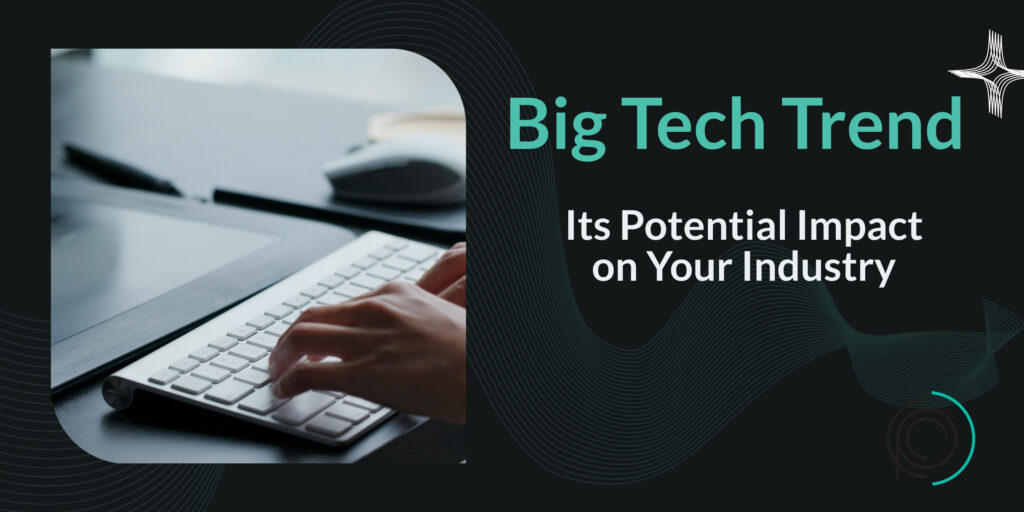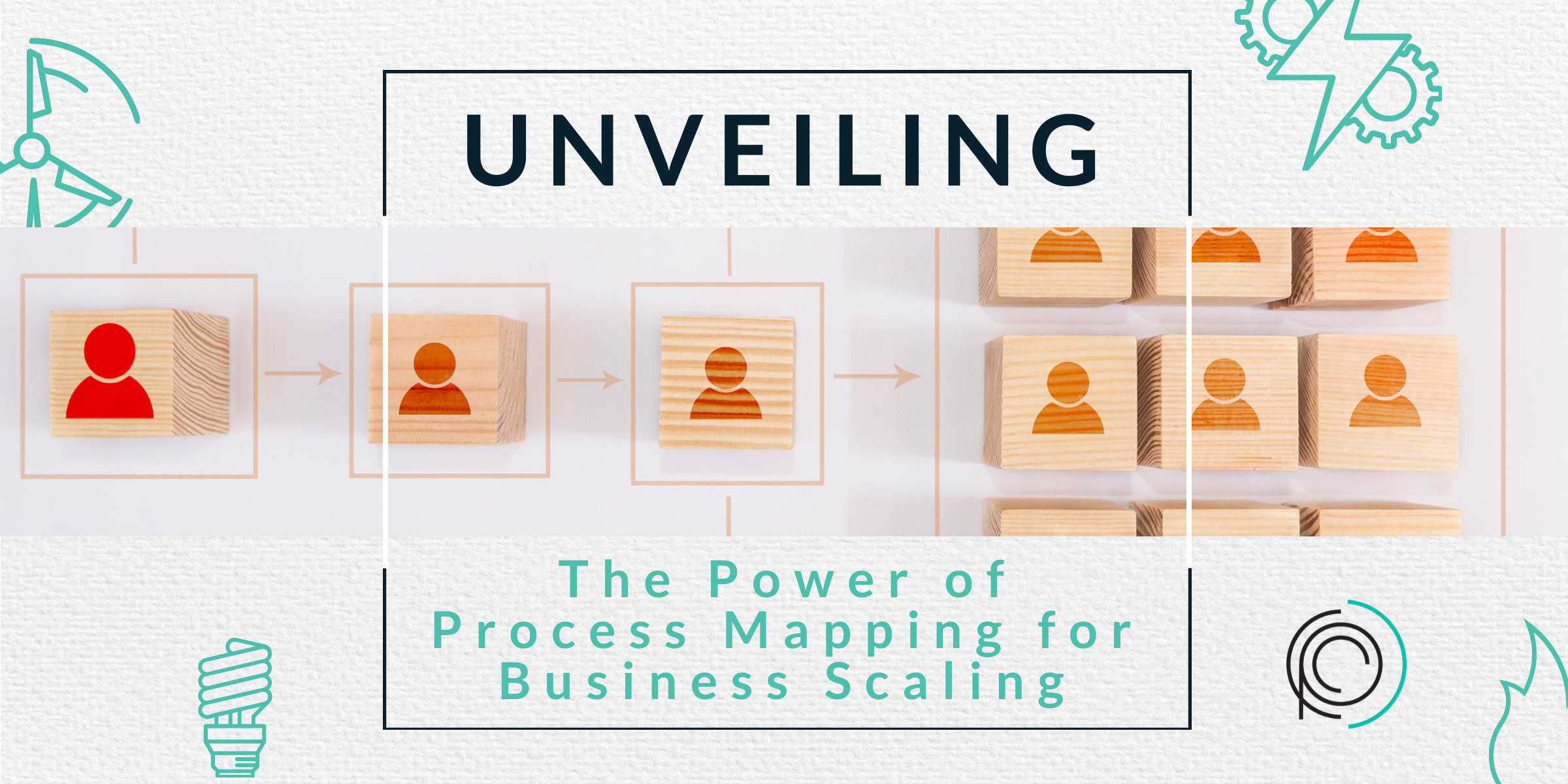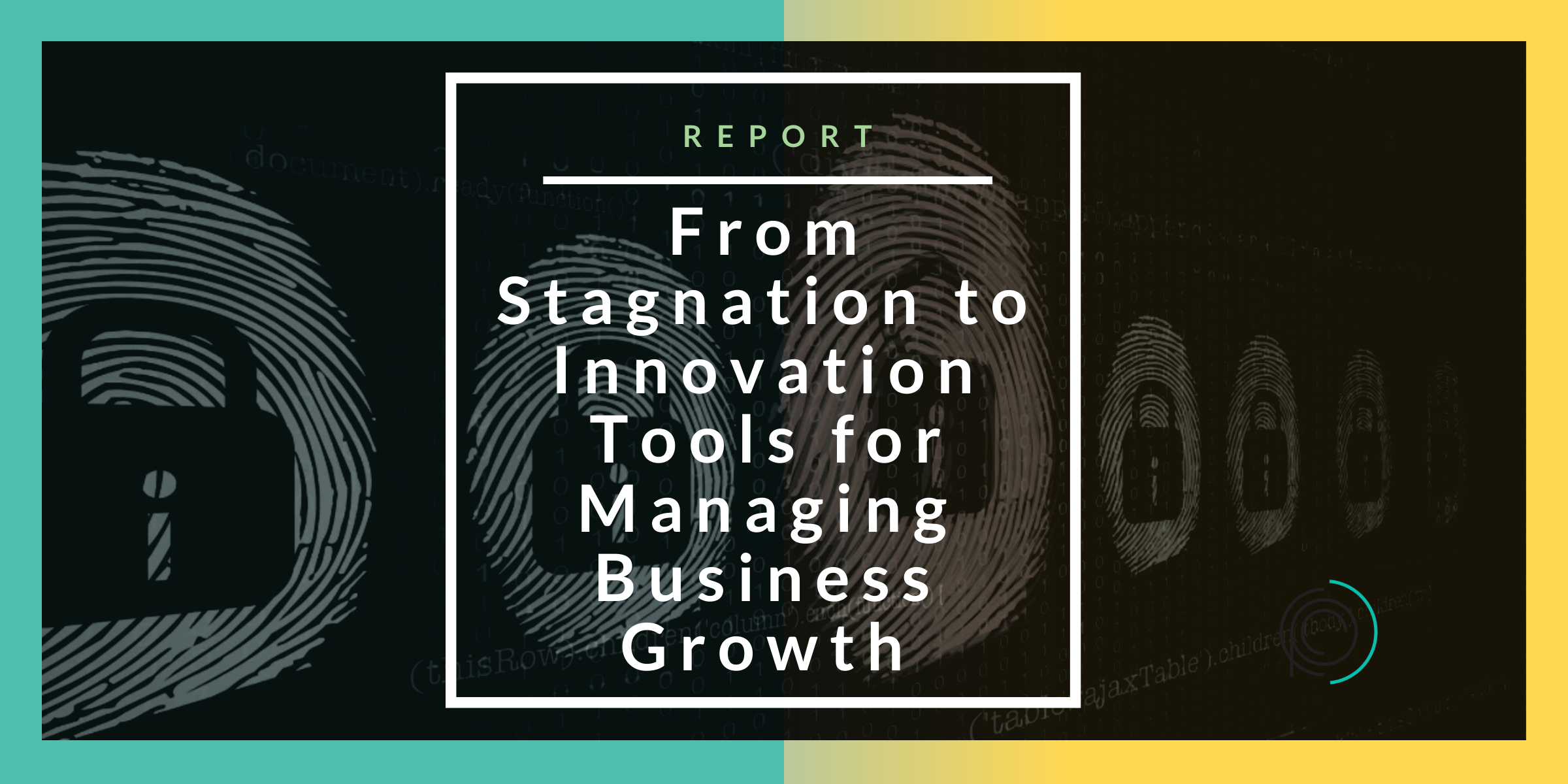Lead the Charge: Harnessing Emerging Technologies to Set the Industry Standard
For middle-market to Fortune 100 business leaders, understanding the next big trend in technology could mean the difference between leading your industry and playing catch-up. Staying ahead of the curve requires not only awareness of emerging technologies but also the foresight to implement them effectively. By investing in research and development, and continually educating themselves and their teams, business leaders can ensure they are not just keeping pace with changes but are setting the pace for others to follow.
Predicting the Next Big Trend in Technology
When we talk about the next big tech trend, one concept consistently rises to the top of conversations—Artificial Intelligence (AI) and Machine Learning (ML). While these technologies are not new, their potential applications and impacts have only begun to be fully realized.
AI and ML are transforming various industries, from healthcare, where they’re used for predictive analytics and personalized medicine, to finance, where they enhance fraud detection and algorithmic trading. Moreover, in the realm of everyday consumer technology, AI-driven virtual assistants and smart home devices are becoming increasingly sophisticated, making daily life more convenient and interconnected. The future holds even more exciting developments, as researchers continue to push the boundaries of what AI and ML can achieve.
The AI and ML Revolution
AI and ML have been disrupting industries for years, but their influence is set to expand exponentially. A report published by some of the large management consulting firms suggests that AI could contribute approximately $13 trillion to global economic activity by 2030. This staggering growth is fueled by AI’s potential to boost productivity, automate complex processes, and offer profound insights through data analysis, revolutionizing the way businesses operate and make decisions.
The potential applications of AI and ML are vast, spanning across various sectors such as healthcare, finance, transportation, and manufacturing. In healthcare, AI can assist in diagnosing diseases with higher accuracy and predicting patient outcomes, leading to more personalized treatment plans and better patient care. Advanced AI algorithms can process vast amounts of medical data, uncovering patterns and correlations that would be impossible for humans to detect, ultimately improving early detection and treatment efficacy.
In finance, machine learning algorithms can detect fraudulent transactions at a much faster rate than traditional methods, providing enhanced security for financial institutions and their customers. Moreover, AI-driven financial advisory services can offer highly personalized investment strategies and financial planning, tailored to individual risk profiles and goals, thus democratizing access to expert financial advice.
The transportation industry stands to benefit significantly from AI-driven autonomous vehicles, which can reduce human error, lower accident rates, and optimize traffic flow. AI can also enhance logistics by predicting demand, optimizing routes, and reducing fuel consumption, leading to more efficient and sustainable transportation networks.
Manufacturing, too, will see transformative changes through AI applications. AI can improve quality control by using computer vision to detect defects with greater precision and speed than human inspectors. Additionally, AI can optimize the supply chain by predicting inventory needs and managing resources more effectively, minimizing waste, and reducing costs.
As these technologies continue to evolve, their integration into everyday business operations will become increasingly seamless, ushering in a new era of innovation and economic growth. Industries that embrace AI and ML are poised to lead the charge into this future, becoming more efficient, resilient, and competitive on a global scale. The adoption of AI and ML will not only drive economic benefits but also pave the way for groundbreaking advancements that could improve quality of life and open new frontiers in human capability.
Key Areas of Impact
1. Customer Experience (CX)
- AI-powered chatbots and virtual assistants are revolutionizing customer service by providing instant, personalized responses to inquiries. These technologies are capable of handling a variety of tasks, from answering frequently asked questions to assisting with complex transactions. Gartner predicts that by 2022, 70% of customer interactions will involve emerging technologies such as machine learning applications, chatbots, and mobile messaging, significantly improving efficiency and customer satisfaction.
- Example: Sephora uses AI to offer personalized beauty advice through its Virtual Artist app. This app allows customers to try on different makeup virtually, receive tailored product recommendations, and even watch tutorials on application techniques. This enhanced level of interaction not only engages customers but also boosts their satisfaction and loyalty to the brand.
2.Human Resources (HR)
- AI-driven analytics can significantly improve various HR functions such as hiring processes, employee retention, and performance management. For instance, companies like Unilever utilize AI to screen candidates, which has resulted in a 75% reduction in hiring time. These AI systems can analyze resumes, assess qualifications, and even conduct initial interviews, allowing HR professionals to focus on more strategic tasks.
- Example: Predictive analytics tools help HR departments forecast turnover rates by analyzing employee data and identifying patterns that may indicate potential resignations. Additionally, these tools can recommend strategies to retain top talent, such as targeted training programs, personalized career development plans, and improved employee engagement initiatives. Through these insights, organizations can create a more stable and motivated workforce.
3. Data Analysis
- The ability of AI to process and analyze vast amounts of data is unmatched. It transforms raw data into actionable insights, enabling informed decision-making and providing a competitive edge. AI algorithms can detect patterns and trends that might be missed by human analysts, ensuring that organizations stay ahead in their respective fields.
- Example: Financial institutions use AI to detect fraudulent transactions in real-time, saving billions of dollars annually and preventing countless cases of financial loss. By continuously monitoring transaction data and identifying unusual patterns, AI systems can flag suspicious activities promptly, allowing for immediate intervention and investigation.
4. Supply Chain Management
- AI plays a crucial role in optimizing logistics and supply chain management by predicting demand, reducing costs, and improving overall efficiency. By analyzing vast amounts of data, AI can forecast inventory needs, streamline warehouse operations, and enhance transportation logistics. This leads to a more responsive and agile supply chain that can quickly adapt to market changes and disruptions.
- Example: DHL utilizes advanced AI algorithms to optimize delivery routes, taking into account real-time traffic data, weather conditions, and other variables. This not only significantly cuts down operational costs but also improves delivery times, leading to higher customer satisfaction and better resource management. Additionally, AI helps DHL manage inventory levels more effectively, ensuring that warehouses are neither overstocked nor understocked, which further enhances operational efficiency.
5. Marketing
- AI enhances marketing strategies through personalized content and targeted advertising. By leveraging machine learning algorithms, businesses can analyze vast amounts of consumer behavior and preferences to deliver more relevant and engaging messaging. This not only improves customer satisfaction but also increases conversion rates and ROI.
- Example: Coca-Cola uses AI to analyze social media data, including posts, comments, and likes, to predict market trends and consumer sentiment. This allows them to tailor their marketing campaigns and product offerings, ensuring they stay ahead of consumer demands and maintain a competitive edge in the market.
The Positive Disruption of AI and ML
The adoption of Artificial Intelligence (AI) and Machine Learning (ML) represents a paradigm shift in how businesses operate across various industries. These transformative technologies have the potential to revolutionize business processes and outcomes in several significant ways:
- Increase Efficiency: Automation of repetitive and mundane tasks through AI and ML allows human workers to focus on more complex, strategic activities that require creativity and critical thinking. This not only boosts productivity but also enhances job satisfaction as employees are relieved from monotonous work.
- Enhance Decision-Making: AI provides data-driven insights, removing much of the guesswork from business strategies. By analyzing vast amounts of data with unparalleled speed and accuracy, AI can uncover patterns and trends that would be impossible for humans to detect, leading to more informed and effective decision-making processes.
- Drive Innovation: The continuous learning capabilities of AI mean that it can adapt and evolve based on new data and experiences. This not only helps in maintaining a competitive edge but also fosters innovation by enabling the development of new products, services, and business models that were previously unimaginable.
By leveraging the power of AI and ML, businesses can achieve unprecedented levels of efficiency, insight, and innovation, paving the way for a future where human and artificial intelligence work hand-in-hand to solve complex problems and create new opportunities.
Real-World Impacts
- Healthcare: AI algorithms are being used to predict patient outcomes and assist in diagnosis, leading to better patient care and reduced costs. For example, machine learning models can analyze medical images to detect early signs of diseases like cancer, allowing for timely intervention and improved survival rates.
- Retail: AI-driven inventory management systems ensure that products are always in stock, reducing lost sales and improving customer satisfaction. These systems can forecast demand based on historical data, seasonal trends, and even social media buzz, making inventory management more efficient and responsive to market changes.
- Manufacturing: Predictive maintenance powered by AI prevents equipment failures, reducing downtime and maintenance costs. By analyzing data from sensors and other monitoring devices, AI can identify patterns that indicate potential issues before they become critical, allowing for proactive maintenance and extending the lifespan of machinery.
Preparing for the Future
For business leaders, the next step is clear. It’s not enough to merely acknowledge the potential of AI and ML; proactive steps must be taken to effectively integrate these transformative technologies into your operations. Here are some actionable steps to consider:
- Invest in AI and ML Capabilities
Allocate resources to develop or acquire AI technologies tailored specifically to your industry and business needs. This could involve purchasing software, investing in hardware, or developing in-house solutions. The goal is to build a robust AI infrastructure that can support various applications across your organization. - Upskill Your Workforce
Implement comprehensive training programs to ensure that your team can effectively utilize AI tools and adapt to new workflows. This may include workshops, online courses, and hands-on training sessions. By fostering a learning environment, you’ll empower your employees to harness the full potential of AI, driving productivity and innovation. - Collaborate with AI Experts
Engage with AI specialists and consultants who can provide valuable insights and guide you through the implementation process. These experts can help you identify the most effective use cases for AI in your business, develop customized solutions, and troubleshoot any challenges that arise. Building strong partnerships with AI professionals can accelerate your journey towards AI integration. - Foster a Culture of Innovation
Encourage experimentation and innovation within your organization to continually explore new applications of AI and ML. Create an environment where employees feel safe to test new ideas and learn from their failures. Host hackathons, innovation labs, and brainstorming sessions to inspire creative solutions and keep your business at the forefront of technological advancements. - Monitor and Adapt
Stay informed about the latest developments in AI and ML and be ready to adapt your strategies as the technology evolves. Regularly review industry reports, attend conferences, and participate in webinars to keep up-to-date with emerging trends. By staying agile and responsive to changes, you can ensure that your AI strategies remain effective and relevant in the dynamic business landscape.
By taking these proactive steps, business leaders can not only prepare for the future but also position their organizations for sustained growth and success in the age of AI and ML.
Conclusion
AI and ML are not just trends; they represent fundamental shifts in how businesses operate and compete in the modern world. These technologies enable organizations to optimize processes, make data-driven decisions, and create innovative products and services. By understanding and leveraging AI and ML, Fortune 100 business leaders and Senior Vice Presidents can ensure their organizations not only survive but thrive in the evolving digital landscape. Embracing these advancements can lead to improved efficiency, enhanced customer experiences, and a competitive edge in the market.
Are you ready to lead your industry into the future? Connect with one of our industry experts today.







